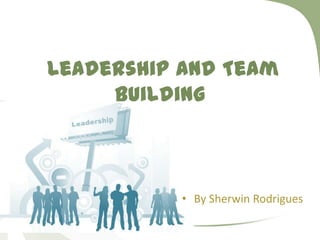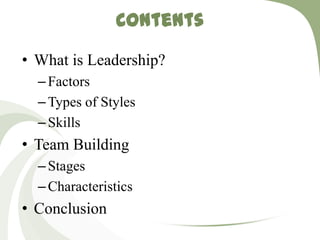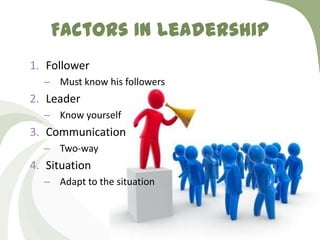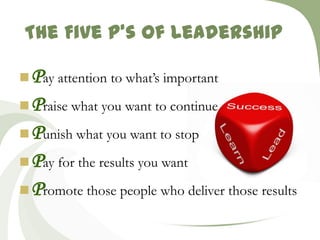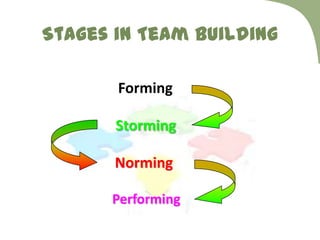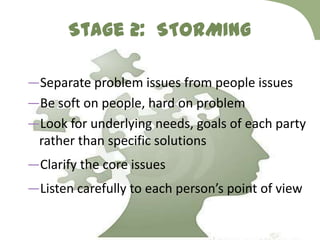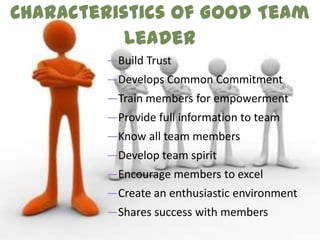This document discusses leadership and team building. It defines leadership as the action of leading a group towards goals. There are different leadership styles such as autocratic, democratic, and laissez-faire. Good leadership skills include drive, emotional intelligence, motivation, knowledge, and self-confidence. Team building involves forming a team, storming through issues, norming team roles and processes, and high performing collaboration. Characteristics of effective teams include trust, commitment to shared goals, empowerment, information sharing, developing team spirit, and celebrating successes together.
